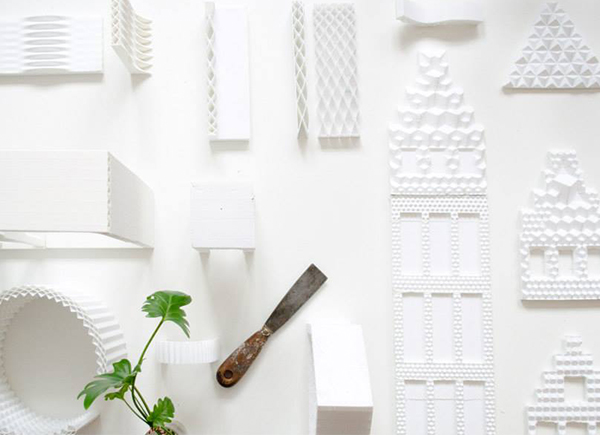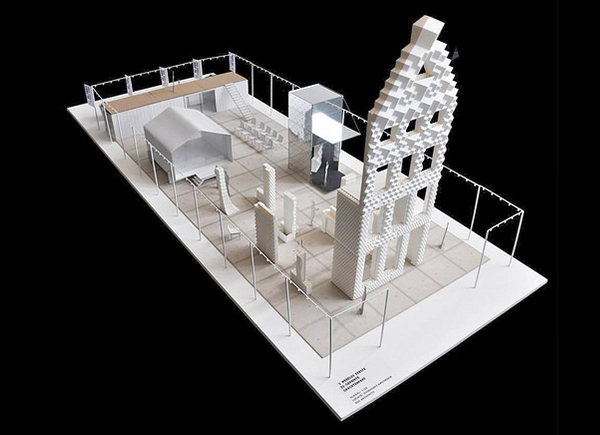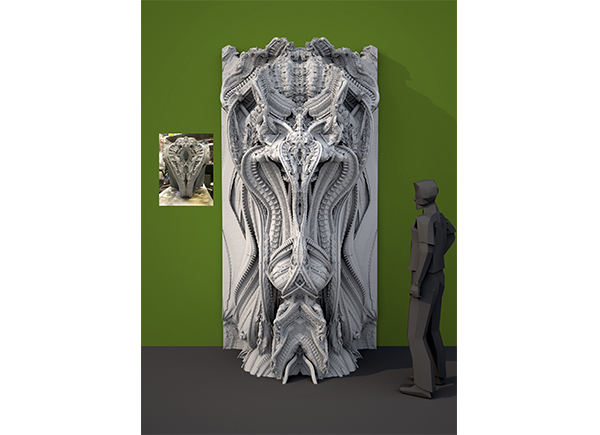Imagine a world where instead of cranes lining the streets at construction sites, large 3D printers are set up to create buildings, printing them layer by layer. This is the world imagined by the latest exhibition at Canada’s Design Exchange. It is a world the design museum and its curators suggest is not only possible, but also probable in the near future.
“It’s wild, but it’s possible, and the technology has come a long way,” says Sara Nickleson, curator of 3DXL–A Large-Scale 3D Printing Experience, an exhibition located off-site in a 3500-square-foot glass pavilion at the corner of King Street and Blue Jay’s Way in Toronto. The exhibition demonstrates the vast potential that 3D printing technology could bring to the world of architectural design by displaying a variety of installations by both local and international designers.

It’s a misconception that only small, plastic models can be printed with 3D technology, explains Nickleson. In reality, 3D printers are now able to work with a diverse assortment of materials from metal to sandstone and even salt to some even more unexpected mediums like chocolate and even biological cells which could potentially be used for medical purposes. Larger machines can be set up to print projects on an even larger scale, with the ability to print buildings, including the inner metal structural elements as well as the outside. Not only will this give designers the opportunity to perfect their creations to a T, but with 3D printing there are no waste materials. There is no extra material to toss into the trash when the project is complete, because the printers will create exactly what is needed. The machines commonly use recycled material, too, making the process even more ecologically sustainable.

DUS Architects, a design firm based in Amsterdam, is currently working on building a full-scale canal house made with a 3D printer. The project is set to be completed over the course of three years, with each room printed separately and then compiled to form a complete house. A small model for this house will be on display at the exhibition for viewers to see.

A special project completed specifically for the exhibit by architect-programmers Michael Hansmeyer and Benjamin Dillenberger will also be a highlight of the show. The latest part of their “Digital Grotesque” series of building components printed in stone, a brand new large-scale wall column will debut at the exhibition. Titled the “Arabesque Wall,” the stone column is as intricately and elaborately designed as a sculpture.

“I’m really excited about how interactive the exhibit is,” says Nickleson. Several small 3D printers will be set up for guests to view the printing process up close. “These take about an hour to print,” says Nickleson, holding up one of the miniature CN Tower statuettes that are set up as examples of the printer’s work. In addition to this, several gentlemen from the Bartlett School of Architecture in London were also invited to demonstrate the work they’ve been doing with 3D printing robotic arms, which are able to print items on an even larger scale. Guests will have the opportunity to watch the robotic arms in action, printing full-sized chairs, layer by layer.
The power of 3D printing and its ability to link the worlds of architecture and design with high-tech science is not only exciting due to its immense power of possibility, but also because it is surely something that will become much more commonplace as time goes by. We can’t wait to see what the future holds for this incredible technology.
